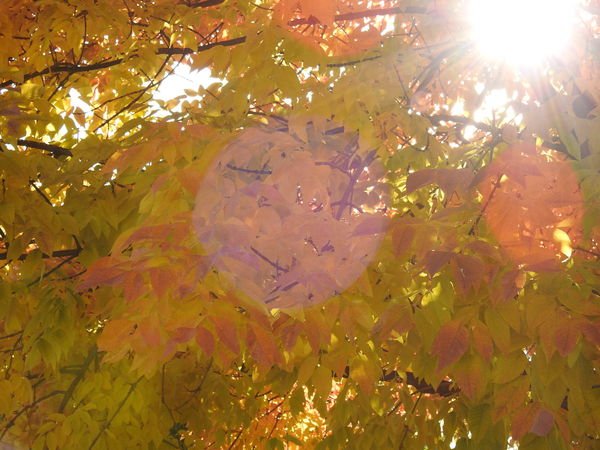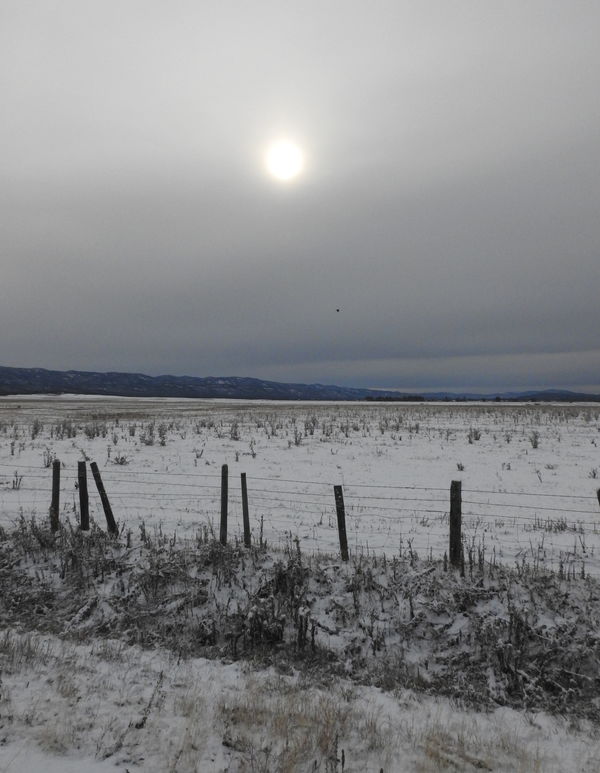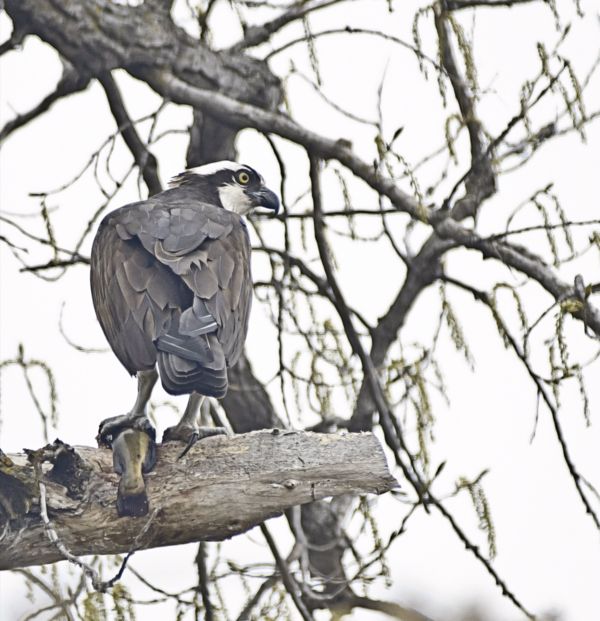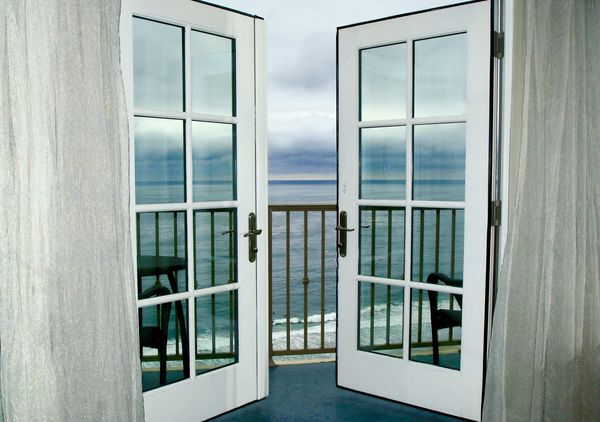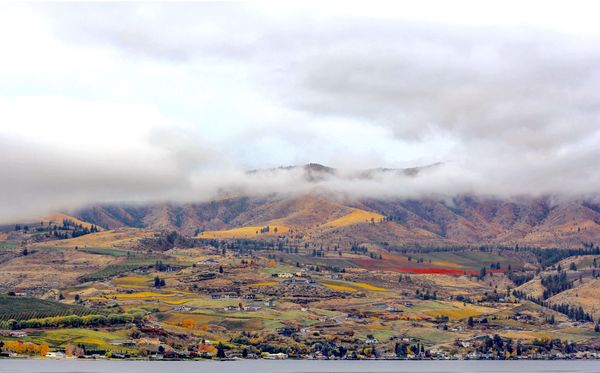Considering the Aspects of Light: part 2 - Harsh and Soft
May 22, 2018 14:03:34 #
Uuglypher wrote:
Carol, Way to go! Super example of tonal management with soft light under the obvious constraints of reduced dynamic range with a white subject! Well done!
Dave
Carol, Way to go! Super example of tonal management with soft light under the obvious constraints of reduced dynamic range with a white subject! Well done!
Dave
Thank you, Dave.
May 22, 2018 14:10:53 #
A bit of harsh and a bit of soft
May 22, 2018 14:15:33 #
Linda,
Thanks for your comments.
You asked:
“Uuglypher - your discussion points regarding the flamingo and lion are terrific. Do you have a personal recommendation (book, article, video) regarding chiaroscuro for beginners?”
Yes,
I recommend:
http://artpaintingartist.org/the-four-canonical-painting-modes-of-the-renaissance/
Chiaroscuro is but one of the four canonical modes of renaissance painting.
Chiaroscuro:
Chiaroscuro emphasis strong rendition of the contrast of harsh lighting, generally from a single, small light source, with exaggerated darkness of shadows and exaggerated brightness of illumined areas. Although a number of painters are recognized for their use of chiaroscuro (Leonardo, Rembrandt, Caravaggio) the single master par excellence of chiaroscuro was (I.M.C.O.)the last named.. Use Google.
Sfumato:
Sfumato is a technique of softening the edges of dark and bright areas, much like, as Leonardo pointed out...”the effect of smoke”. In photography we accomplish sfumato by the various means of softening harsh edges. Leonardo’s Mona Lisa is the classic example of sfumato.
Unione:
While sfumato looses the sharp lines between bright and dark colors, there often is also a diminished over-all color intensity. The effect of Unione is to assure maintenance of color intensities while softening the lines between them.
Cangiante:
Cangiante focuses on the the colors used for shading and shadows, often relying on darker complements of the color being shaded. Personally, I find no corellate of cangiante in color photography, except possibly - and this may be a stretch - to enhance reflected colors between juxtaposed surfaces ... from an adjacent colored surface to a rec3ptive uncolored or less saturated colored surface. Louis Agazzis Fuentes, the exceptionally skilled painter of birds and other animals, was particularly conscious of cangiante in his environmental bird studies. While cangiante can be captured in photography, there seems (to me) to be little broad recognition or concerted efforts to utilize the phenomenon and to assure its capture except in floral and advertising photography.
These renaissance painting techniques are best appreciated by viewing classic examples of each. I recommend Googling each term and > Images for examples to study.
Dave
Thanks for your comments.
You asked:
“Uuglypher - your discussion points regarding the flamingo and lion are terrific. Do you have a personal recommendation (book, article, video) regarding chiaroscuro for beginners?”
Yes,
I recommend:
http://artpaintingartist.org/the-four-canonical-painting-modes-of-the-renaissance/
Chiaroscuro is but one of the four canonical modes of renaissance painting.
Chiaroscuro:
Chiaroscuro emphasis strong rendition of the contrast of harsh lighting, generally from a single, small light source, with exaggerated darkness of shadows and exaggerated brightness of illumined areas. Although a number of painters are recognized for their use of chiaroscuro (Leonardo, Rembrandt, Caravaggio) the single master par excellence of chiaroscuro was (I.M.C.O.)the last named.. Use Google.
Sfumato:
Sfumato is a technique of softening the edges of dark and bright areas, much like, as Leonardo pointed out...”the effect of smoke”. In photography we accomplish sfumato by the various means of softening harsh edges. Leonardo’s Mona Lisa is the classic example of sfumato.
Unione:
While sfumato looses the sharp lines between bright and dark colors, there often is also a diminished over-all color intensity. The effect of Unione is to assure maintenance of color intensities while softening the lines between them.
Cangiante:
Cangiante focuses on the the colors used for shading and shadows, often relying on darker complements of the color being shaded. Personally, I find no corellate of cangiante in color photography, except possibly - and this may be a stretch - to enhance reflected colors between juxtaposed surfaces ... from an adjacent colored surface to a rec3ptive uncolored or less saturated colored surface. Louis Agazzis Fuentes, the exceptionally skilled painter of birds and other animals, was particularly conscious of cangiante in his environmental bird studies. While cangiante can be captured in photography, there seems (to me) to be little broad recognition or concerted efforts to utilize the phenomenon and to assure its capture except in floral and advertising photography.
These renaissance painting techniques are best appreciated by viewing classic examples of each. I recommend Googling each term and > Images for examples to study.
Dave
May 22, 2018 14:34:23 #
edrobinsonjr wrote:
A bit of harsh and a bit of soft
Hi, Ed,
I may be a bit picky here (if I am, I am sure someone will let me know...) but I think your first image portrays the sun and the gap in the tree’s canopy through which subjects behind and below your camera’s position would be receiving
harsh illumination.
Your second image, however, is, IMO, an excellent affirmation that even when the sun may be partly visible through heavy overcast, a shadowless, soft illumination pervades all of the scene.
Well shown!
Dave
May 22, 2018 14:38:02 #
R.G. wrote:
At risk of venturing down one of those rabbit holes such as where lie "what is art," ...lighting on its own can have a direct influence on mood.
-
-
 if asked for my own humble opinion, I'd say light has the biggest influence on mood. Maybe that's because I've had an awareness of light (if not always the ability to make the best use of it) for as long as I can remember.
if asked for my own humble opinion, I'd say light has the biggest influence on mood. Maybe that's because I've had an awareness of light (if not always the ability to make the best use of it) for as long as I can remember. This linked article rates light at #2 (behind emotion), saying, "Good photographers key into good light. When they see good light, they find a subject to shoot. When they see a good subject, they wait for the good light (or create it themselves with studio lighting, modifiers, etc)."
Hopefully, this series and the terrific discussions we're enjoying will help us identify what "good" means to our own interests, subjects and the stories we want to tell.
May 22, 2018 14:47:00 #
CSand wrote:
Sandy, your photos are highly engaging! I'm so envious of your opportunity with the different weather and light. #3 is my personal favorite for the strong silhouette of the centered tree + the backlit reddish ground cover....Staying here in mtns. for 2 weeks and have been trying to capture what I see. ...
#1 is really interesting to view how the light rays diffuse as they travel down and spread out into the darker areas.
You could probably darken the exposure of #4 a bit, and if the brightest area of water bothers you, clone it out - cover it with a bit of darker water, rocks etc.
But the most important thing from your set, I believe, is how well you captured the overall beauty of those fleeting moments of light - even those delightful sunbursts!
May 22, 2018 14:55:05 #
edrobinsonjr wrote:
A bit of harsh and a bit of soft
Uuglypher wrote:
Hi, Ed, I may be a bit picky here (if I am, I am sure someone will let me know...) [#1]subjects receiving harsh illumination.
[#2]...even when the sun may be partly visible through heavy overcast, a shadowless, soft illumination pervades all of the scene...
[#2]...even when the sun may be partly visible through heavy overcast, a shadowless, soft illumination pervades all of the scene...
Dave, can you elaborate about your comments referencing #1? I am interpreting the leaves as subject. Is your point that they are shaded?
Ed, thank you for this pair! Strong contrasts to contemplate. I also enjoyed Dave's description relating to soft illumination even when the sun is somewhat visible.
May 22, 2018 14:56:00 #
Uuglypher wrote:
Hi, Ed,
I may be a bit picky here (if I am, I am sure someone will let me know...) but I think your first image portrays the sun and the gap in the tree’s canopy through which subjects behind and below your camera’s position would be receiving
harsh illumination.
Your second image, however, is, IMO, an excellent affirmation that even when the sun may be partly visible through heavy overcast, a shadowless, soft illumination pervades all of the scene.
Well shown!
Dave
I may be a bit picky here (if I am, I am sure someone will let me know...) but I think your first image portrays the sun and the gap in the tree’s canopy through which subjects behind and below your camera’s position would be receiving
harsh illumination.
Your second image, however, is, IMO, an excellent affirmation that even when the sun may be partly visible through heavy overcast, a shadowless, soft illumination pervades all of the scene.
Well shown!
Dave
Dave,
Be picky if you like but it seems harsh to me and thanks for your kind comment about the second image.
Ed
May 22, 2018 14:56:20 #
Much appreciated, Dave!
Uuglypher wrote:
Linda,
Yes,
I recommend:
http://artpaintingartist.org/the-four-canonical-painting-modes-of-the-renaissance/
Chiaroscuro is but one of the four canonical modes of renaissance painting.
These renaissance painting techniques are best appreciated by viewing classic examples of each. I recommend Googling each term and > Images for examples to study.
Dave
Yes,
I recommend:
http://artpaintingartist.org/the-four-canonical-painting-modes-of-the-renaissance/
Chiaroscuro is but one of the four canonical modes of renaissance painting.
These renaissance painting techniques are best appreciated by viewing classic examples of each. I recommend Googling each term and > Images for examples to study.
Dave
May 22, 2018 15:10:56 #
Two examples of soft lighting: one a zoo macaw in open shade on a sunny day, and the other a wild osprey on a heavily overcast day.
Portrait of blue and yellow macaw in classic soft light:
Light source: soft/diffuse: open shade under a shade umbrella on a day with clear sky and full, mid-day sun. Notice the brightly lit background.
Absence of defined shadows relieves undue accentuation of obviously wrinkled facial skin and allowing full definition of details of head plumage. The only deep black shadows are in the nostril and within the partly opened beak, and, of course, the pupil of the eye.
This is a subject of much reduced dynamic range, easily within the range of the cameraâÂÂs jpeg-adjusted in-camera histogram frame.
Osprey on perch with captured fish:
light source: soft/diffuse; early afternoon heavy overcast.
Effects:
Dynamic range reduced. White plumage at illuminance valueVII.
No shadows reach the Value 0 evidenced only in the pupil of the eye.
Note that the diffuse, soft light mitigates not-a-bit revelation of the contours and details of the plumage.
Dave
Portrait of blue and yellow macaw in classic soft light:
Light source: soft/diffuse: open shade under a shade umbrella on a day with clear sky and full, mid-day sun. Notice the brightly lit background.
Absence of defined shadows relieves undue accentuation of obviously wrinkled facial skin and allowing full definition of details of head plumage. The only deep black shadows are in the nostril and within the partly opened beak, and, of course, the pupil of the eye.
This is a subject of much reduced dynamic range, easily within the range of the cameraâÂÂs jpeg-adjusted in-camera histogram frame.
Osprey on perch with captured fish:
light source: soft/diffuse; early afternoon heavy overcast.
Effects:
Dynamic range reduced. White plumage at illuminance valueVII.
No shadows reach the Value 0 evidenced only in the pupil of the eye.
Note that the diffuse, soft light mitigates not-a-bit revelation of the contours and details of the plumage.
Dave
May 22, 2018 16:57:12 #
Soft light, or what I think of as the absence of defining light, can be quite challenging at times. You still want the depth and the emotional draw of the photo, but how to bring it about is the question I ask each time I hit the shutter button. As I am relatively new photography, that is where I struggle to find the right shot.
We had a getaway on Sunday just to break from the mundane. The hotel had a lovely ocean view room, but the day was grey, misty, cold and generally not very nice. My wife commented on the view thru the window and I took a quick shot to see what I was contending with for light. That is pic one.
Flash was my only option, but finding the right location for it in the room was an adventure. Lots of mirrors and reflections coming from everywhere. Pic 2 was a result of the flash being high to my right. Vaulted ceilings do strange things to light.
Picture 3 was taken on a dull grey day in October at Lake Chelan in Washington. The sun could really light up this landscape, so much so that the colors would wash out. But on this day, the light, being soft and cloudy, served up a festive band of color.
The last photo is from my collection of Silhouettes.
We had a getaway on Sunday just to break from the mundane. The hotel had a lovely ocean view room, but the day was grey, misty, cold and generally not very nice. My wife commented on the view thru the window and I took a quick shot to see what I was contending with for light. That is pic one.
Flash was my only option, but finding the right location for it in the room was an adventure. Lots of mirrors and reflections coming from everywhere. Pic 2 was a result of the flash being high to my right. Vaulted ceilings do strange things to light.
Picture 3 was taken on a dull grey day in October at Lake Chelan in Washington. The sun could really light up this landscape, so much so that the colors would wash out. But on this day, the light, being soft and cloudy, served up a festive band of color.
The last photo is from my collection of Silhouettes.
May 22, 2018 17:11:16 #
pmorin wrote:
"Relatively new to photography," yet showing fantastic creative talent and technical skill! With #2, you've made the scene so welcoming, we don't care it was gray and drizzly Soft light, or what I think of as the absence of d... (show quote)

Your Chelan photo speaks to how often folks are disappointed with their autumn foliage photos because they feel bright sun must surely be the best way to show off the colors.
The last is really interesting because I want to describe the light as soft, especially being so evenly distributed in the frame, yet your exposure belies the "lack of contrast" classification. So we have to think about whether we're shooting towards the light source in these exercises too. Many thanks for a thoughtful and thorough presentation!
May 22, 2018 17:24:35 #
I take pictures in any kind of light. I have a personal preference for the soft diffused light of certain kinds of fog when the sun shines through it with some color (usually either yellow/orange or blue). That makes me lose my mind and forget my camera settings. Add rays and I'm totally mad.
That said, I "like" shooting in any kind of light, maybe because half my fun is in finding subjects and compositions that interest me and the other half is in post processing them to be something I saw with my mind as much as with my eyes. If the light is harsh and contrasty I look for ways to use it to emphasize shadows or some other detail I want to make more of. If it's soft I often enhance with glow-type effects to increase the dreamy effect I love about that kind of light. I'll add stuff to this thread as long as it runs, and will enjoy seeing the images of others. Lots of information to digest already!
These first two images were both shot in Iceland, in Myvatn, several hours apart and in entirely different light. The industrial was shot under a harsh, bright noon sun, and the horses after the sky was totally clouded over in late afternoon with a storm moving in. I often do monochrome with harsh light photos.
That said, I "like" shooting in any kind of light, maybe because half my fun is in finding subjects and compositions that interest me and the other half is in post processing them to be something I saw with my mind as much as with my eyes. If the light is harsh and contrasty I look for ways to use it to emphasize shadows or some other detail I want to make more of. If it's soft I often enhance with glow-type effects to increase the dreamy effect I love about that kind of light. I'll add stuff to this thread as long as it runs, and will enjoy seeing the images of others. Lots of information to digest already!
These first two images were both shot in Iceland, in Myvatn, several hours apart and in entirely different light. The industrial was shot under a harsh, bright noon sun, and the horses after the sky was totally clouded over in late afternoon with a storm moving in. I often do monochrome with harsh light photos.
May 22, 2018 17:53:01 #
I took this photo on the beach in Rio with my wife in front (she routinely outpaces me). I got the benefit of strong afternoon light that gave me glistening water and silhouettes. But the backdrop was caught in a softer light due to the thin clouding further on the beach.
May 22, 2018 17:53:45 #
Linda:
Harsh light can be done with back light. Soft light can be done on a rainy day. What many do not know is that digital is
basically like video. Video loves less contrast and if you avoid its limitations you will get little or no detail because of blooming in the highlights. Even the contrast slider in Photoshop cannot replace what is not there. One way around it is HDR but that may
not be possible because of the number of exposures to accomplish it. Anyway; here are two examples.
Harsh light can be done with back light. Soft light can be done on a rainy day. What many do not know is that digital is
basically like video. Video loves less contrast and if you avoid its limitations you will get little or no detail because of blooming in the highlights. Even the contrast slider in Photoshop cannot replace what is not there. One way around it is HDR but that may
not be possible because of the number of exposures to accomplish it. Anyway; here are two examples.

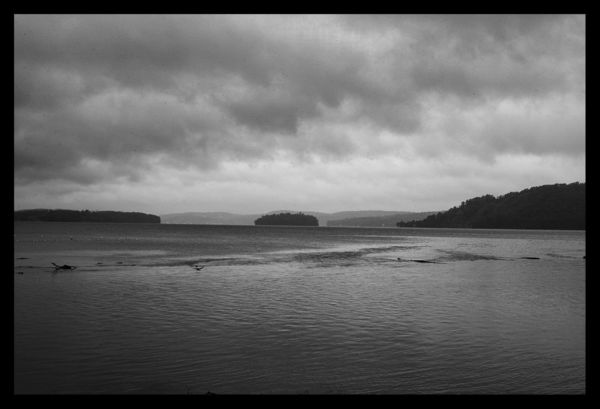
If you want to reply, then register here. Registration is free and your account is created instantly, so you can post right away.


